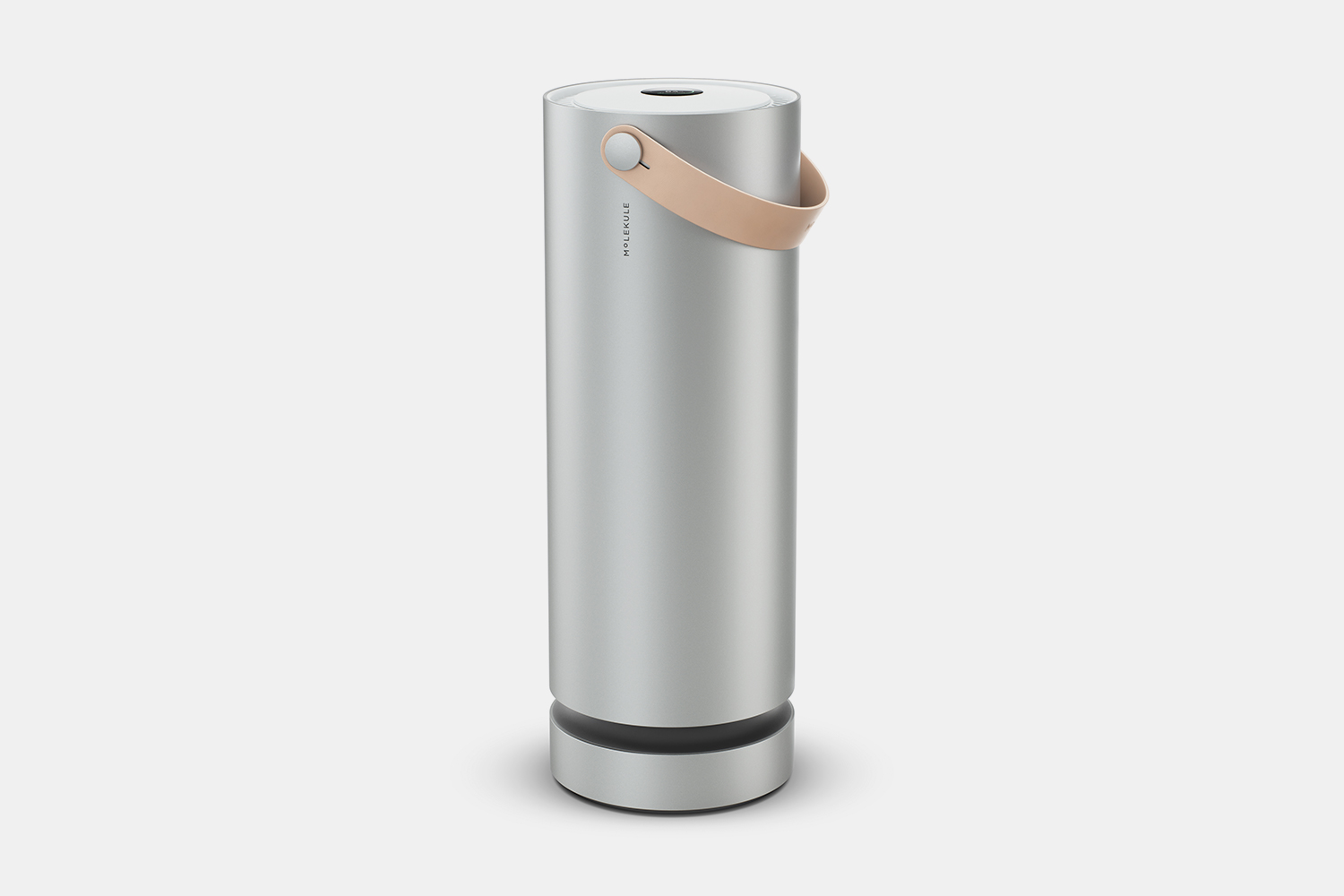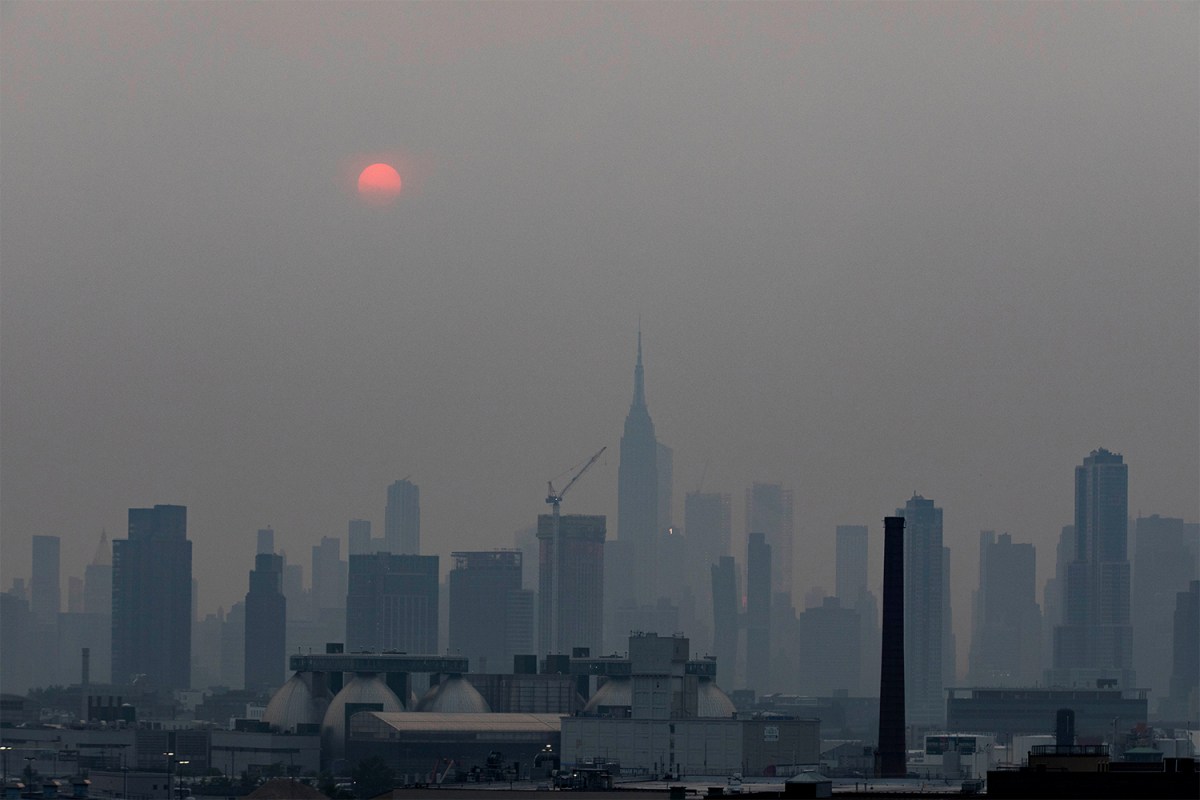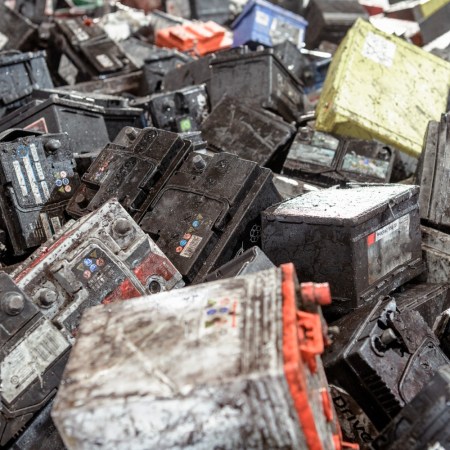Since the Bootleg Fire began wreaking havoc on southern Oregon last month, it has scorched more than 413,000 acres, blanketing expanses of land in smoke and haze. And despite recent rains, the blaze continues to spread.
The effects of this massive fire haven’t just been felt in Oregon, either, nor have they been contained to the West Coast, where the Bootleg and more than 80 other active wildfires have spread across more than one million acres. Smoky conditions have literally been visible from space, and smoke and soot have carried thousands of miles east, all the way to the Atlantic Coast, thanks to high-level winds.
In New York City, an eerie gray haze was visible for more than two weeks. The air quality index for fine particulate matter reached a whopping 170 — the highest the city has seen in 15 years and a level that experts consider harmful, even for healthy individuals.
While the smoke has moved on for now, this isn’t an issue that experts predict will just go away, and it’s certainly not a one-time thing. This is the second year in a row the effects of western wildfires have made their way east, and with climate change showing no signs of slowing, their frequency and severity only seems to be increasing. What will that mean for the air that we breathe?
“One of the things that’s really interesting about this smoke is what it’s actually made up of,” says Dilip Goswami, the CEO of Molekule. “When you’re thinking about how to protect yourself from the threats in the air, it’s important to understand what they are. When you burn things like wood and other matter that burns up in these wildfires, you get visible a lot of ash falling pretty nearby, but what carries much longer are the smaller pieces that get burnt out — some you might actually see like haze, but there’s also the really tiny particles.”
“Also, importantly, there are the gases that are actually more numerous than the particles, and this stuff stays airborne and aloft for long periods of time. That’s what you’re faced with if you’re downstream breathing the air.”
Molekule is a company whose revolutionary air purifiers are cleared by the FDA for their ability to destroy viruses and bacteria from the air in your home. Of special note are VOCs (volatile organic compounds), carbon-based organic compounds that are found in smoke, which along with ozone can irritate our lungs and cross into our blood streams.

We all know about the immediate effects of breathing in smoky or smoggy air: burning eyes, coughing fits, shortness of breath, headaches. Dilip says studies have also linked a number of longer-term ailments to smoke exposure, including asthma, depleted immune systems and, related to that, an increase in susceptibility to COVID-19. Unclean air can even have on impact your concentration and productivity: a study conducted by Harvard showed a link between indoor VOCs and a drop in cognitive functioning scores.
When it comes to recommendations on how to keep the air in your home fresh and clean, the first thing most experts will advise is to facilitate better ventilation and air flow in your space. According to the Environmental Protection Agency, indoor air quality can be anywhere between two to five times more polluted than outdoor air, and people spend an estimated 90 percent of their time indoors.
What do you do, though, if the air quality outside is now the problem? First, Goswami suggests using a weather-predicting phone application to regularly check the air condition. If air condition levels drop, close the windows and fire up your air purifier if it’s not already on. Molekule devices, for example, are able to complete two to three complete air changes in your space within an hour’s time, capturing and using heightened levels of oxygen within its system to destroy VOCs that present a threat to your health and productivity.
Another thing to keep in mind is off-gassing. You know the smell that comes off a new mattress, piece of furniture or rug? It’s the smell of chemicals beginning the process of off-gassing, in which VOCs are released into the air from that new sofa for anywhere from six months to five years, depending on the chemicals used to treat the product.
If you plan on bringing any new furniture into your home while air quality outside is not so good, try looking for vintage or secondhand furniture that has already finished the majority of its off-gassing process, or wait until the air is clean again to unbox it so that you can open the windows up and allow ventilation. And always make sure to run your purifier. You can also look specifically for low- or zero-VOC mattresses and paint to lessen the amount of chemical compounds entering your home.
Finally, make sure to eliminate as much dust and dander as possible, routinely checking and changing the filter on your air conditioning units, regularly using a HEPA (high efficiency particulate air) vacuum cleaner, and cutting down on the amount of carpeting in your home, which can become a breeding ground for stuff like chemicals, dust mites, pet dander, dirt and fungi.
This article appeared in an InsideHook newsletter. Sign up for free to get more on travel, wellness, style, drinking, and culture.
























